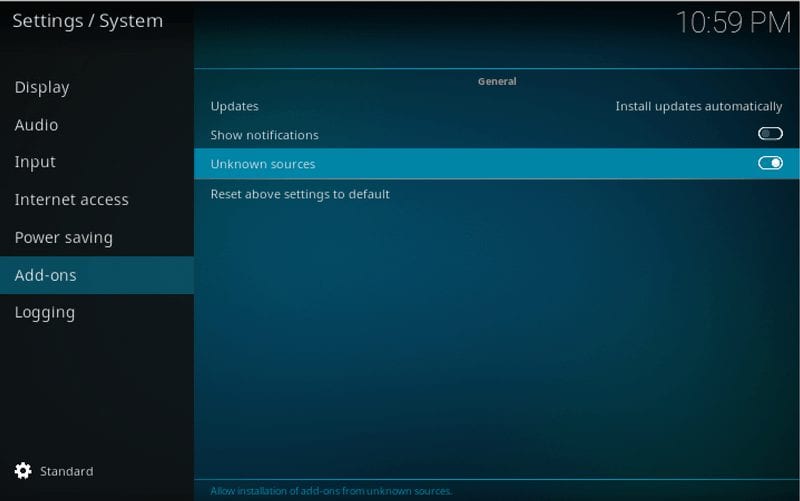

- #Amazon fire tv kodi cache settings update#
- #Amazon fire tv kodi cache settings android#
- #Amazon fire tv kodi cache settings free#
You can also squeeze out a bit more performance by disabling In-app purchases and Notifications. We recommend disabling this only temporarily to boost performance when needed.
#Amazon fire tv kodi cache settings update#
Note, however, that you should still update your apps regularly in order to receive important security updates. Here you can disable Automatic Updates, which downloads and installs new versions of your apps in the background. Select Prime Photos, toggle off Allow guest connections and disable Access Prime Photos, assuming you don’t use this feature.Select Collect App Usage Data and choose Turn off.Turning off these features can also improve your privacy.
#Amazon fire tv kodi cache settings free#
By disabling a few “features” in the settings, you can free up more resources for Kodi and other apps. The Fire TV Stick has quite a bit of bloatware enabled by default. This will also prevent apps you’ve forced stopped from automatically reloading themselves later on. Perform these actions in the order they appear: Clear data, then Clear cache. You can use these on pretty much every app whether you use it or not, but it’s definitely worth doing on apps you don’t use as frequently. In the same menu where you find the Uninstall and Force stop options, you’ll also see Clear data and Clear cache. It might not be clear that anything has happened at first, but the app will no longer be weighing down your Fire Stick. This time, instead of selecting Uninstall, choose Force stop. To do so, follow the exact same steps as you would to uninstall the app as laid out above. Unused apps that don’t have the uninstall option, or apps that you’d like to keep but just don’t use very much, can be stopped so they no longer run in the background. We’ll show you what to do about those next. Note that certain apps come pre-installed on Fire TV and cannot be uninstalled.

Click Uninstall, then Uninstall again to confirm.To uninstall Fire TV apps, do the following: Uninstall any apps you don’t use, and remove any Kodi add-ons you don’t use, too. This may seem obvious, but apps and add-ons take up space in memory and can run in the background, hogging up resources. For the latter, follow these instructions: You can either unplug the device and plug it back in again, or restart from Fire OS. Just like a computer or phone, an occasional restart can help unclog a struggling Fire TV Stick and breathe new life into it. Most people keep their Fire TV Sticks plugged in and running all the time, even when they aren’t using them. Also check to make sure the wall adapter uses the correct voltage for your country. If you opt to use a third-party manufacturer’s cable and adapter, make sure it has the same output as the original: 3rd-gen Fire TV Stick with Alexa Voice Remote uses a 5W, 1.0A adapter. You can plug the USB cable into your TV’s USB port or a spare laptop port, but these have a much lower output than a wall socket and will throttle the Fire TV’s performance. Use the manufacturer’s charging cable and power adapter. Many of these tweaks will make a minuscule impact on their own, but together they add up to a significant power boost and can speed up your firestick. In this article, we’ll discuss a few actions you can take to improve the performance on a Fire TV Stick to get it running like new again. Fire TV Stick performance issues can take the form of:

But power users–particularly those who have installed and frequently use Kodi–may notice performance degradation over time. The Fire TV Stick doesn’t always struggle to do its job out of the box. Those changes take a toll on performance, utilizing much of the added power from the new CPU.
#Amazon fire tv kodi cache settings android#
In step with the performance upgrade, Amazon also updated to a newer version of Android and an overhauled the interface with a more modern design. Third-generation Firesticks include a basic version and a higher-end 4K one, both of which come with Alexa voice remote. It now uses a Mediatek CPU designed for low-end tablets. The latest Fire TV Stick added Alexa voice remote as a default feature and ramped up the processor from dual core to quad core. The third-generation Amazon Fire TV Stick, while an improvement on its predecessor, is not a particularly powerful device and complaints about slow speeds are not uncommon.


 0 kommentar(er)
0 kommentar(er)
